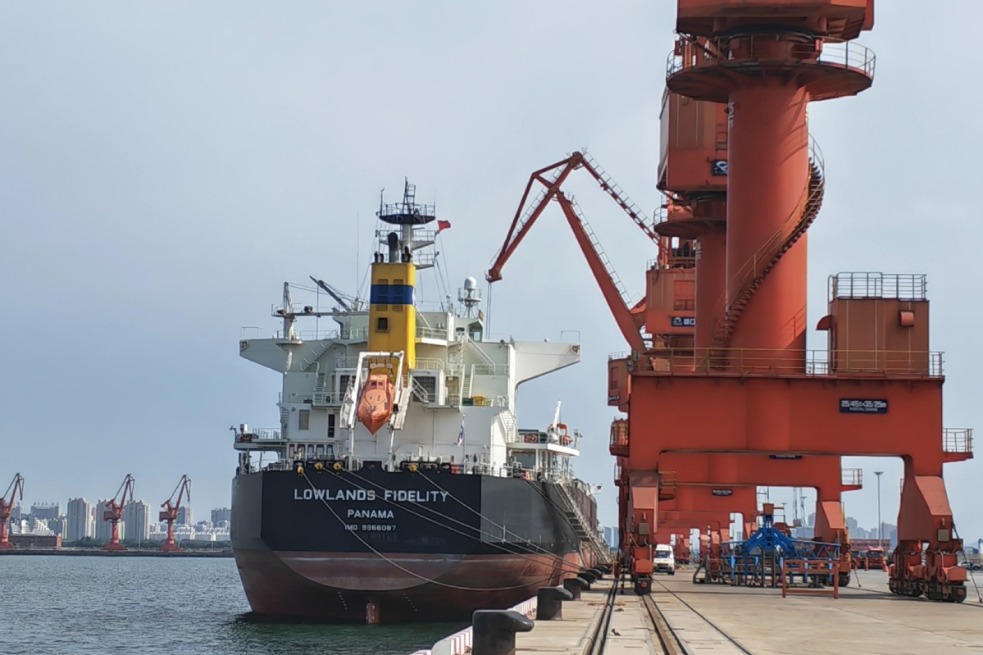Same old aim, same old way
US strategy to contain China is the latest manifestation of its projection of power in the Pacific


Both the recent establishment of AUKUS alliance-the three-party security pact between Australia, the United Kingdom and the United States-and the previously revitalized Quadrilateral Security Dialogue held between the US, Australia, India and Japan must be put not only within the context of the renewed offensive against China initiated by the Donald Trump administration and the more recent retreat of the US troops deployed in Afghanistan, leaving the so-called Indo-Pacific region as the top-priority of the US' foreign policy, but also in a long-term perspective: in other words, the recent US turn to the Pacific takes up a previous historical pattern of the country, dating back to the late 19th century.
The closure of the American continental frontier, announced by the US Census Bureau in 1890, was followed by the US intervention in the Philippines in 1898, and it was even preceded by previous incursions in both Japan in 1853-54 and the Korean Peninsula in 1871. The events in the Philippine Islands were also related with greater American interests in the Pacific. Being a latecomer to the opening of China to foreign trade, the US needed an operational basis to participate in the Western plunder of the Asian country. This indeed occurred in 1900, when US troops joined an alliance of nations that eventually occupied Beijing within the context of the Boxer Uprising. Later on, in 1903, the US induced the segregation and independence of Panama from Colombia in order to forge a convenient passage between the Pacific and Atlantic oceans; this was concreted in 1914 with the opening of the Panama Canal, which was fully controlled by the North American nation.
The involvement of the US in World War II was a direct result of the conflict held with Japan in the Pacific Ocean. In the aftermath of the war in Europe, the US Pacific policy was immediately addressed to the Soviet Union, first and horrendously by releasing atomic bombs on Hiroshima and Nagasaki, then by involving itself in the Chinese Civil War, and finally by devising a true "belt of contention", ranging from Australia in the South to Japan and the Korean Peninsula in the North; this, among other relevant developments, resulted in the partition of Korea and the ensuing war of 1950-53, which included the blocking of the Taiwan Straits by the seventh American Fleet, assuring the survival of Chiang Kaishek's regime on the island. This strategy also included the realignment of interests between Japan and the Republic of Korea, achieved in 1965, when the two countries established diplomatic relationship.
The greatest stain in this strategy was, of course, the US involvement in Vietnam, which destabilized the US both domestically and externally. The tables temporarily turned with the normalization of diplomatic relations with China.
The 1980s was a decade in which the US would prevail over the Soviet Union in the Cold War. As for the US interests in the Pacific, the geo-economic situation was functional to them until the Japanese companies started to compete successfully with US enterprises. The US reacted to this, and the Japanese economy then started to suffer under the effects of the 1985 Plaza Accord, which lasted well into the 1990s. It should be added that the concomitant geopolitical scenario in 1985 was not helpful, for the Japanese to maneuver.
However, other economic tectonic movements were occurring in East Asia giving the development success not only of Japan but also of the ROK and China, bringing about greater economic integration in the area. This can be seen, for instance, in the success of the ASEAN+3 mechanism, which reverted a politically-driven alliance-the Association of Southeast Asian Nations-into an economic cooperation forum, at least up to 2011. In addition, the normalization of Sino-US diplomatic relations came along with the cost of a mounting trade deficit for the US. Albeit China behaved responsibly in the global scenario, allowing for the renminbi to gradually appreciate against the US dollar since the early 1990s, this only reflected the existence of substantial inflows of capital toward the Chinese economy, which in turn sustained its export capacities.
In parallel, relatively unconnected events taking place in the Middle East from 1979 to 2001 diverted the military attention of the US away from the Pacific, where, as stated, the Sino-US normalization provided both sides with political tranquillity. These processes constituted a pause in the above-outlined long-term historical trajectory. By 2011, however, it was clear for the US that "China had stood up "in the region. The size of the Asian nation, and its geopolitical position outside the postwar military order have rendered it more difficult for the US to effectively achieve contention policies aimed at China, such as the pivot to the Asia-Pacific announced by the Obama administration. In addition, even economic protectionist measures, such as those devised by the Trump administration, have also been far from successful. In this light, the US foreign policy seems irrational within the contemporary context: the US projection over the Pacific, which, by the way, prevents China from recovering full sovereignty rights over its territory, is only a mark of a remora, a projection of the past into a very different present.
The author is a professor in modern Asian history and Chinese history at National University of Cordoba, Argentina. The author contributed this article to China Watch, a think tank powered by China Daily. The views do not necessarily reflect those of China Daily.
Contact the editor at editor@chinawatch.cn
































